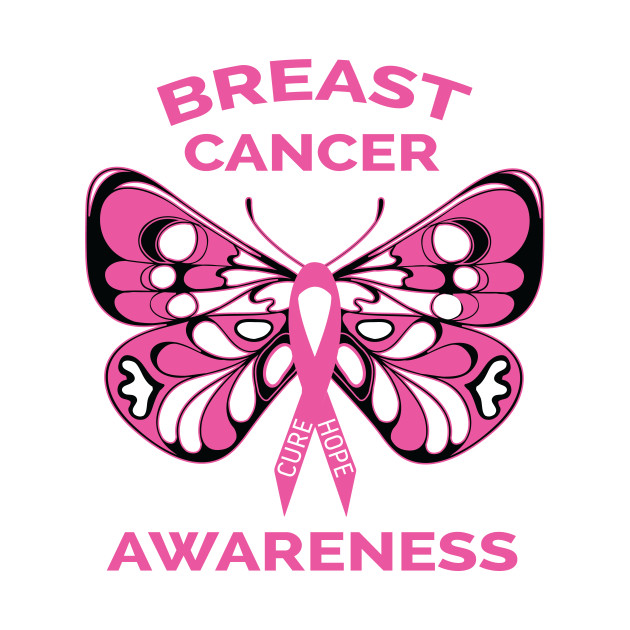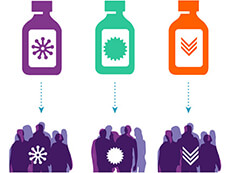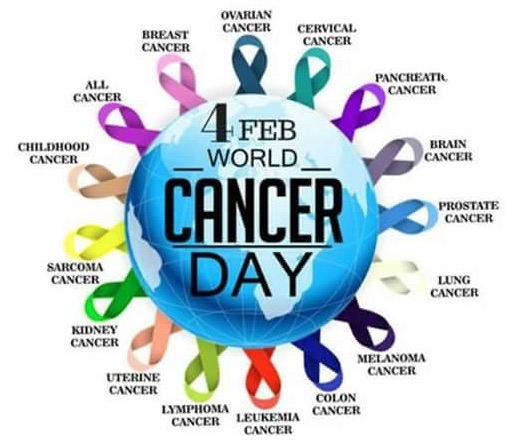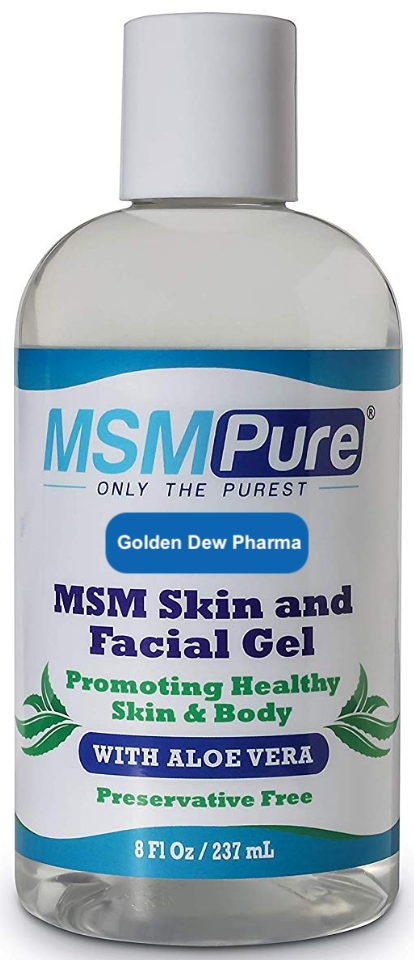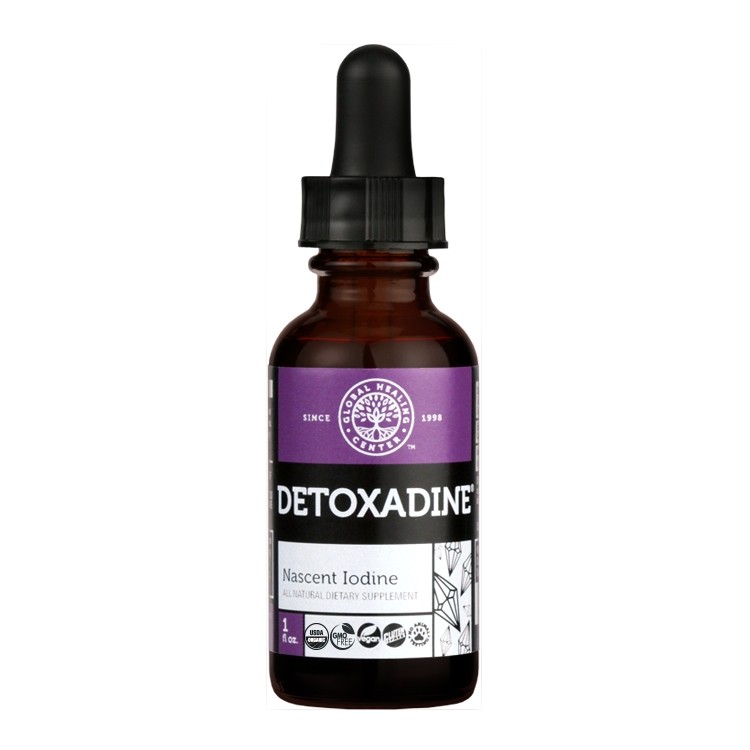|
Sulfur is called nature's "beauty mineral" because it keeps skin smooth and youthful and hair glossy. Sulfur is necessary for the production of collagen and keratin, proteins necessary for the health and maintenance of skin, nails and hair'
$14.95
Iodine is a trace mineral that is vital to the function of the thyroid gland. The human body does not make iodine, so all iodine intake must come from either our diet or from supplements.
|
|
Cancer Screening >
Carcinogens
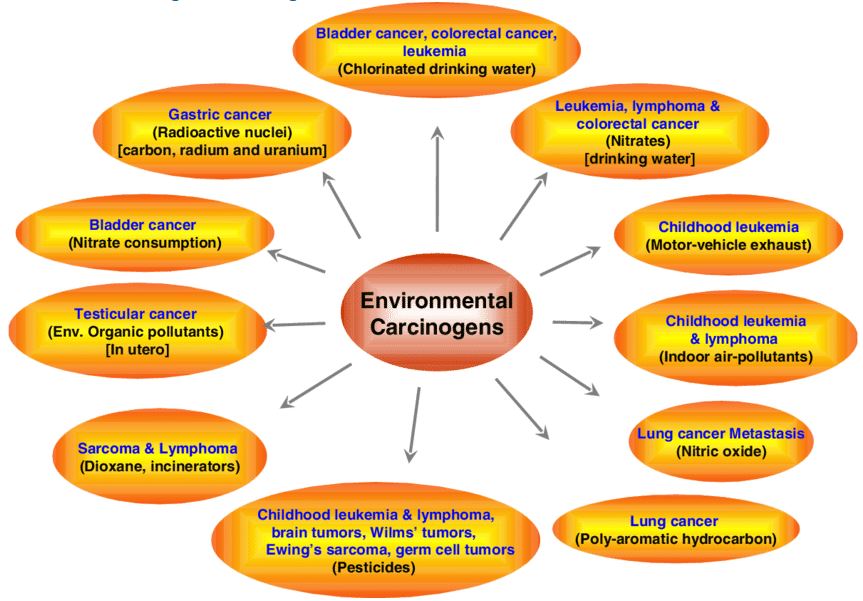 CarcinogensCancer is any disease in which normal cells are damaged and do not undergo programmed cell death as fast as they divide via mitosis. Carcinogens may increase the risk of cancer by altering cellular metabolism or damaging DNA directly in cells, which interferes with biological processes, and induces the uncontrolled, malignant division, ultimately leading to the formation of tumors. Usually, severe DNA damage leads to programmed cell death, but if the programmed cell death pathway is damaged, then the cell cannot prevent itself from becoming a cancer cell. There are many natural carcinogens. Aflatoxin B1, which is produced by the fungus Aspergillus flavus growing on stored grains, nuts and peanut butter, is an example of a potent, naturally occurring microbial carcinogen. Certain viruses such as hepatitis B and human papilloma virus have been found to cause cancer in humans. The first one shown to cause cancer in animals is Rous sarcoma virus, discovered in 1910 by Peyton Rous. Other infectious organisms which cause cancer in humans include some bacteria (e.g. Helicobacter pylori [2][3]) and helminths (e.g. Opisthorchis viverrini [4] and Clonorchis sinensis.[5] Dioxins and dioxin-like compounds, benzene, kepone, EDB, and asbestos have all been classified as carcinogenic.[6] As far back as the 1930s, Industrial smoke and tobacco smoke were identified as sources of dozens of carcinogens, including benzo[a]pyrene, tobacco-specific nitrosamines such as nitrosonornicotine, and reactive aldehydes such as formaldehyde, which is also a hazard in embalming and making plastics. Vinyl chloride, from which PVC is manufactured, is a carcinogen and thus a hazard in PVC production. Co-carcinogens are chemicals that do not necessarily cause cancer on their own, but promote the activity of other carcinogens in causing cancer. After the carcinogen enters the body, the body makes an attempt to eliminate it through a process called biotransformation. The purpose of these reactions is to make the carcinogen more water-soluble so that it can be removed from the body. However, in some cases, these reactions can also convert a less toxic carcinogen into a more toxic carcinogen. DNA is nucleophilic; therefore, soluble carbon electrophiles are carcinogenic, because DNA attacks them. For example, some alkenes are toxicated by human enzymes to produce an electrophilic epoxide. DNA attacks the epoxide, and is bound permanently to it. This is the mechanism behind the carcinogenicity of benzo[a]pyrene in tobacco smoke, other aromatics, aflatoxin and mustard gas. IUPAC definition
Carcinogenicity: Ability or tendency to produce cancer. Note: In general, polymers are not known as carcinogens or mutagens, however, residual monomers or additives can cause genetic mutations.[7]
RadiationCERCLA identifies all radionuclides as carcinogens, although the nature of the emitted radiation (alpha, beta, gamma, or neutron and the radioactive strength), its consequent capacity to cause ionization in tissues, and the magnitude of radiation exposure, determine the potential hazard. Carcinogenicity of radiation depends on the type of radiation, type of exposure, and penetration. For example, alpha radiation has low penetration and is not a hazard outside the body, but emitters are carcinogenic when inhaled or ingested. For example, Thorotrast, a (incidentally radioactive) suspension previously used as a contrast medium in x-ray diagnostics, is a potent human carcinogen known because of its retention within various organs and persistent emission of alpha particles. Low-level ionizing radiation may induce irreparable DNA damage (leading to replicational and transcriptional errors needed for neoplasia or may trigger viral interactions) leading to pre-mature aging and cancer.[8][9][10] Not all types of electromagnetic radiation are carcinogenic. Low-energy waves on the electromagnetic spectrum including radio waves, microwaves, infrared radiation and visible light are thought not to be, because they have insufficient energy to break chemical bonds. Evidence for carcinogenic effects of non-ionizing radiation is generally inconclusive, though there are some documented cases of radar technicians with prolonged high exposure experiencing significantly higher cancer incidence.[11] Higher-energy radiation, including ultraviolet radiation (present in sunlight), x-rays, and gamma radiation, generally is carcinogenic, if received in sufficient doses. For most people, ultraviolet radiations from sunlight is the most common cause of skin cancer. In Australia, where people with pale skin are often exposed to strong sunlight, melanoma is the most common cancer diagnosed in people aged 15–44 years.[12][13] Substances or foods irradiated with electrons or electromagnetic radiation (such as microwave, X-ray or gamma) are not carcinogenic.[citation needed] In contrast, non-electromagnetic neutron radiation produced inside nuclear reactors can produce secondary radiation through nuclear transmutation. In prepared foodChemicals used in processed and cured meat such as some brands of bacon, sausages and ham may or may not produce carcinogens.[14] For example, nitrites used as food preservatives in cured meat such as bacon have also been noted as being carcinogenic with demographic links, but not causation, to colon cancer.[15] Cooking food at high temperatures, for example grilling or barbecuing meats, can, or can not, also lead to the formation of minute quantities of many potent carcinogens that are comparable to those found in cigarette smoke (i.e., benzo[a]pyrene).[16] Charring of food looks like coking and tobacco pyrolysis, and produces carcinogens. There are several carcinogenic pyrolysis products, such as polynuclear aromatic hydrocarbons, which are converted by human enzymes into epoxides, which attach permanently to DNA. Pre-cooking meats in a microwave oven for 2–3 minutes before grilling shortens the time on the hot pan, and removes heterocyclic amine (HCA) precursors, which can help minimize the formation of these carcinogens.[17] Reports from the Food Standards Agency have found that the known animal carcinogen acrylamide is generated in fried or overheated carbohydrate foods (such as french fries and potato chips).[18] Studies are underway at the FDA and European regulatory agencies to assess its potential risk to humans. In cigarettesThere is a strong association of smoking with lung cancer; the lifetime risk of developing lung cancer increases significantly in smokers.[19] A large number of known carcinogens are found in cigarette smoke. Potent carcinogens found in cigarette smoke include polycyclic aromatic hydrocarbons (PAH, such as benzo[a]pyrene), Benzene, and Nitrosamine.[20] The tar from cigarette smoke is similar to that of marijuana smoke and contains similar carcinogens.[21] Mechanisms of carcinogenicityCarcinogens can be classified as genotoxic or nongenotoxic. Genotoxins cause irreversible genetic damage or mutations by binding to DNA. Genotoxins include chemical agents like N-nitroso-N-methylurea (NMU) or non-chemical agents such as ultraviolet light and ionizing radiation. Certain viruses can also act as carcinogens by interacting with DNA. Nongenotoxins do not directly affect DNA but act in other ways to promote growth. These include hormones and some organic compounds.[22] International Agency for Research on CancerThe International Agency for Research on Cancer (IARC) is an intergovernmental agency established in 1965, which forms part of the World Health Organization of the United Nations. It is based in Lyon, France. Since 1971 it has published a series of Monographs on the Evaluation of Carcinogenic Risks to Humans[23] that have been highly influential in the classification of possible carcinogens.
Globally Harmonized SystemThe Globally Harmonized System of Classification and Labelling of Chemicals (GHS) is a United Nations initiative to attempt to harmonize the different systems of assessing chemical risk which currently exist (as of March 2009) around the world. It classifies carcinogens into two categories, of which the first may be divided again into subcategories if so desired by the competent regulatory authority:
U.S. National Toxicology ProgramThe National Toxicology Program of the U.S. Department of Health and Human Services is mandated to produce a biennial Report on Carcinogens.[24] As of June 2011, the latest edition was the 12th report (2011).[6] It classifies carcinogens into two groups:
American Conference of Governmental Industrial HygienistsThe American Conference of Governmental Industrial Hygienists (ACGIH) is a private organization best known for its publication of threshold limit values (TLVs) for occupational exposure and monographs on workplace chemical hazards. It assesses carcinogenicity as part of a wider assessment of the occupational hazards of chemicals.
European UnionThe European Union classification of carcinogens is contained in the Dangerous Substances Directive and the Dangerous Preparations Directive. It consists of three categories:
This assessment scheme is being phased out in favor of the GHS scheme (see above), to which it is very close in category definitions. Safe Work AustraliaUnder a previous name, the NOHSC, in 1999 Safe Work Australia published the Approved Criteria for Classifying Hazardous Substances [NOHSC:1008(1999)].[25] Section 4.76 of this document outlines the criteria for classifying carcinogens as approved by the Australian government. This classification consists of three categories:
ProcarcinogenA procarcinogen is a precursor to a carcinogen. One example is nitrites when taken in by the diet. They are not carcinogenic themselves, but turn into nitrosamines in the body, which can be carcinogenic.[26] Common carcinogensOccupational carcinogensOccupational carcinogens are agents that pose a risk of cancer in several specific work-locations:
Others
Major carcinogens implicated in the four most common cancers worldwideIn this section, the carcinogens implicated as the main causative agents of the four most common cancers worldwide are briefly described. These four cancers are lung, breast, colon, and stomach cancers. Together they account for about 41% of worldwide cancer incidence and 42% of cancer deaths (for more detailed information on the carcinogens implicated in these and other cancers, see references[33][34]). Lung cancerLung cancer (pulmonary carcinoma) is the most common cancer in the world, both in terms of cases (1.6 million cases; 12.7% of total cancer cases) and deaths (1.4 million deaths; 18.2% of total cancer deaths).[35] Lung cancer is largely caused by tobacco smoke. Risk estimates for lung cancer in the United States indicate that tobacco smoke is responsible for 90% of lung cancers. Other factors are implicated in lung cancer, and these factors can interact synergistically with smoking so that total attributable risk adds up to more than 100%. These factors include occupational exposure to carcinogens (about 9-15%), radon (10%) and outdoor air pollution (1-2%).[36] Tobacco smoke is a complex mixture of more than 5,300 identified chemicals. The most important carcinogens in tobacco smoke have been determined by a “Margin of Exposure” approach.[37] Using this approach, the most important tumorigenic compounds in tobacco smoke were, in order of importance, acrolein, formaldehyde, acrylonitrile, 1,3-butadiene, cadmium, acetaldehyde, ethylene oxide, and isoprene. Most of these compounds cause DNA damage by forming DNA adducts or by inducing other alterations in DNA.[34] DNA damages are subject to error-prone DNA repair or can cause replication errors. Such errors in repair or replication can result in mutations in tumor suppressor genes or oncogenes leading to cancer. Breast cancerBreast cancer is the second most common cancer [(1.4 million cases, 10.9%), but ranks 5th as cause of death (458,000, 6.1%)].[35] Increased risk of breast cancer is associated with persistently elevated blood levels of estrogen.[38] Estrogen appears to contribute to breast carcinogenesis by three processes; (1) the metabolism of estrogen to genotoxic, mutagenic carcinogens, (2) the stimulation of tissue growth, and (3) the repression of phase II detoxification enzymes that metabolize ROS leading to increased oxidative DNA damage.[39][40][41] The major estrogen in humans, estradiol, can be metabolized to quinone derivatives that form adducts with DNA.[42] These derivatives can cause dupurination, the removal of bases from the phosphodiester backbone of DNA, followed by inaccurate repair or replication of the apurinic site leading to mutation and eventually cancer. This genotoxic mechanism may interact in synergy with estrogen receptor-mediated, persistent cell proliferation to ultimately cause breast cancer.[42] Genetic background, dietary practices and environmental factors also likely contribute to the incidence of DNA damage and breast cancer risk. Colon cancerColorectal cancer is the third most common cancer [1.2 million cases (9.4%), 608,000 deaths (8.0%)].[35] Tobacco smoke may be responsible for up to 20% of colorectal cancers in the United States.[43] In addition, substantial evidence implicates bile acids as an important factor in colon cancer. Twelve studies (summarized in Bernstein et al.[44]) indicate that the bile acids deoxycholic acid (DCA) and/or lithocholic acid (LCA) induce production of DNA-damaging reactive oxygen species and/or reactive nitrogen species in human or animal colon cells. Furthermore, 14 studies showed that DCA and LCA induce DNA damage in colon cells. Also 27 studies reported that bile acids cause programmed cell death (apoptosis). Increased apoptosis can result in selective survival of cells that are resistant to induction of apoptosis.[44] Colon cells with reduced ability to undergo apoptosis in response to DNA damage would tend to accumulate mutations, and such cells may give rise to colon cancer.[44] Epidemiologic studies have found that fecal bile acid concentrations are increased in populations with a high incidence of colon cancer. Dietary increases in total fat or saturated fat result in elevated DCA and LCA in feces and elevated exposure of the colon epithelium to these bile acids. When the bile acid DCA was added to the standard diet of wild-type mice invasive colon cancer was induced in 56% of the mice after 8 to 10 months.[45] Overall, the available evidence indicates that DCA and LCA are centrally important DNA-damaging carcinogens in colon cancer. Stomach cancerStomach cancer is the fourth most common cancer [990,000 cases (7.8%), 738,000 deaths (9.7%)].[35] Helicobacter pylori infection is the main causative factor in stomach cancer. Chronic gastritis (inflammation) caused by H. pylori is often long-standing if not treated. Infection of gastric epithelial cells with H. pylori results in increased production of reactive oxygen species (ROS).[46][47] ROS cause oxidative DNA damage including the major base alteration 8-hydroxydeoxyguanosine (8-OHdG). 8-OHdG resulting from ROS is increased in chronic gastritis. The altered DNA base can cause errors during DNA replication that have mutagenic and carcinogenic potential. Thus H. pylori-induced ROS appear to be the major carcinogens in stomach cancer because they cause oxidative DNA damage leading to carcinogenic mutations. Diet is thought to be a contributing factor in stomach cancer - in Japan where very salty pickled foods are popular, the incidence of stomach cancer is high. Preserved meat such as bacon, sausages, and ham increases the risk while a diet high in fresh fruit and vegetables may reduce the risk. The risk also increases with age.[48] Other known carcinogens:
References
|
|
|

OPEN 24 HOURS: ACCIDENT EMERGENCY, LAB SERVICES, IMAGING SERVICES & PHARMACY

